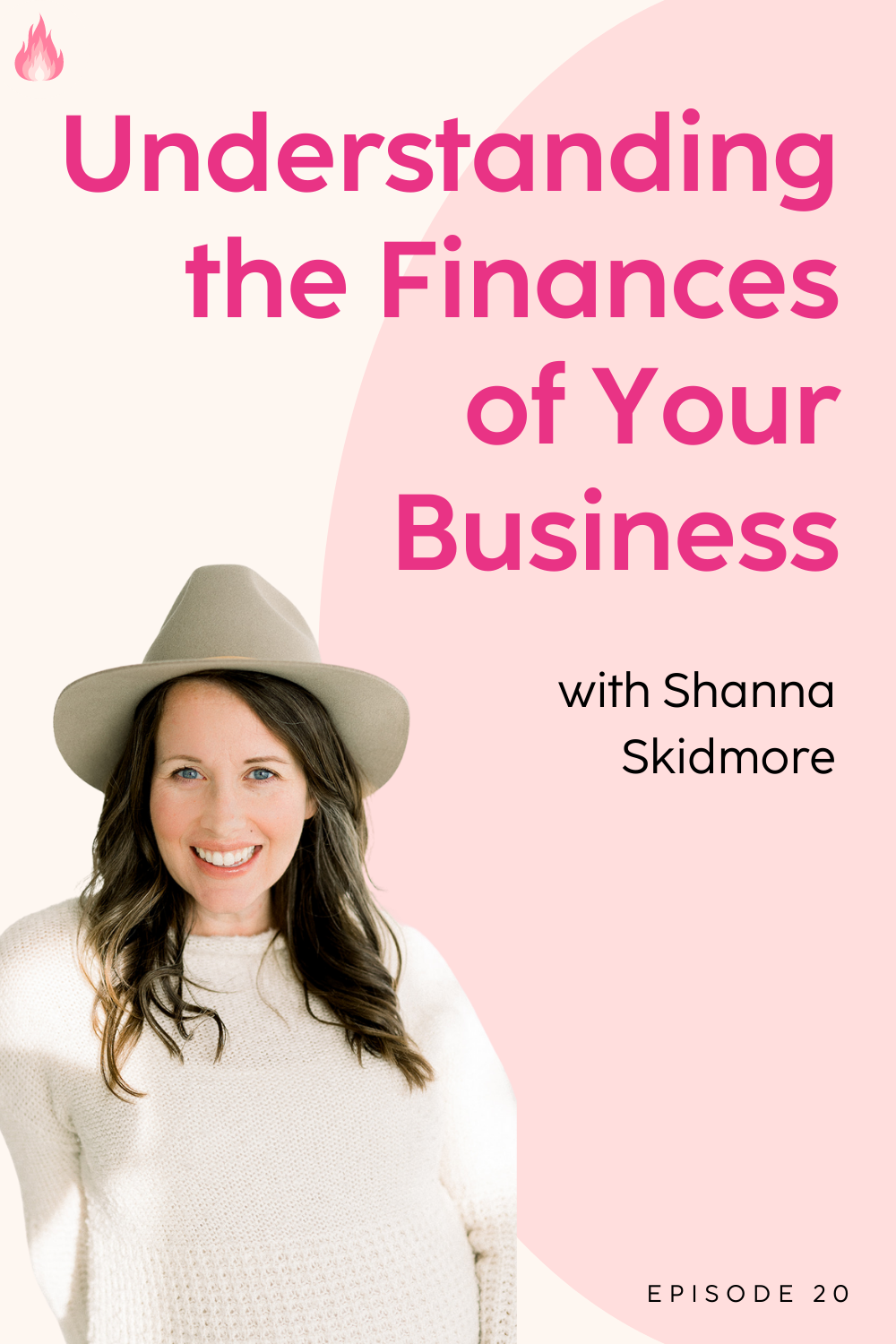Understanding the Finances of Your Business
TUNE IN ANYWHERE YOU LISTEN TO PODCASTS
Shanna Skidmore on What You Really Need to Know about Your Business Finances
The biggest part of running a business is making sure that you're making money, but there are so many parts to business finances that it can be confusing. In this episode, financial advisor to creatives and money guru Shanna Skidmore is breaking down all the need-to-know terms for us and giving us her best tips on making sure your business is profitable and sustainable.
Join the personal finance challenge
Hop on the waitlist for The Blueprint Model
Her Entrepreneur Journey
Shanna has been in the finance industry for 14 years. She went to college to get a degree in Psychology, but after taking a class in accounting, she realized she enjoyed working with numbers, so she got a Business degree in Finance as well. She started working for a money management firm, where she quickly realized that the majority of her clients were women who owned their own business, and she ended up opening her own personal finance practice.
After moving to another state for her husband to pursue his career, Shanna started working with a private equity firm as a controller for a fashion designer. That’s where things really started to click for her, and she ended up working with a floral designer, and really explaining the psychology side of finances. Since then she’s been working with creatives to help them understand and evaluate their money, both in business and personal finance.
What actually makes a business profitable?
Profit is “leftover money,” which means that it’s all of your sales (the money you bring in) minus all of your expenses (money that goes out). What’s left over after that is what the IRS views as your profit for income tax purposes. Our goal is to always have leftovers, because you’ll pay yourself out of the profit.
What is profit and loss and how do we use a P&L?
Profit and Loss is an accounting report that shows how much money came in through sales, how much money was spent, and what money is leftover. If the money left over is positive, that’s your profit. If it’s negative, that’s your loss. You should really try to create a P&L (Profit and Loss) statement every month.
What is actually included in our expenses?
Expenses are any dollar that leaves your business. So rent, utilities, and general expenses, purchases you make, courses or softwares that you buy, and then any product costs such as materials to produce your work. If it leaves your business, you should mark it as an expense.
What is your cash flow?
Cash flow is just another way to talk about profit. It’s the money you have sitting in the bank once you’ve paid your expenses, your taxes, and yourself - so essentially, it’s the leftover money that you have to work with. It’s important to pay attention to your cash flow because you may need to save up that leftover money for when you have slower months/seasons in your business and still need some money to work with.
I don’t live by my cash flow. I live by my spending plan.
Is there a certain percentage that we should set aside for taxes?
It does vary a little depending on where you’re at in your business. For every dollar that you take out of your business to actually pay yourself, you should set aside 30% on top of that for taxes. For example, if you pay yourself $1,000 for your salary, then you should save $300 into your tax account. Then try to keep your expenses (rent, utilities, purchases, etc.) under 30% as well.
What are your tips for saving money?
Set a spending plan (better way to say budget) for what you have coming in and the expenses you know you have going out. Spend according to this plan and budget for the things that you need and want. If you have trouble sticking to a plan and not spending your money, then try opening a separate account that you know you won’t touch and moving some of your money into there for slower seasons. Try to build up enough in that account that you have at least 3 months of what it costs to run your business.
Stay tuned for new episodes of Females on Fire every Wednesday and Friday!
Love this episode? Your feedback would mean the world to us!
Want more from Females on Fire?
Grab your ticket to the Females on Fire Conference to join us live and in person for 2 days of business and personal growth!
Join the Fire Starter Club to get exclusive trainings, resources, live networking and co-working calls, and more!
Join the Females on Fire Facebook Community to get first dibs on freebies and announcements, plus meet some other amazing ladies like yourself!
If you enjoyed today's episode, please
Text 'PODCAST' to (910) 541-9177 to be first to know about episodes and even text in your questions about the episodes!
Post a screenshot from the episode on your Instagram Stories and tag @hayleyluckadoo & @femalesonfire so we can repost you!
Leave a podcast rating/review on Apple Podcasts or Spotify.
Subscribe for new episodes every Wednesday and Friday.
Enjoy these offers from our affiliate partners:
Get 50% off Flodesk for life for beautiful email marketing
Run your online business the easy way with ThriveCart
Use code ‘FEMALESONFIRE’ to get 10% off your supplements order at GutPersonal
TOP CATEGORIES:

















